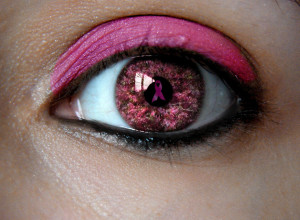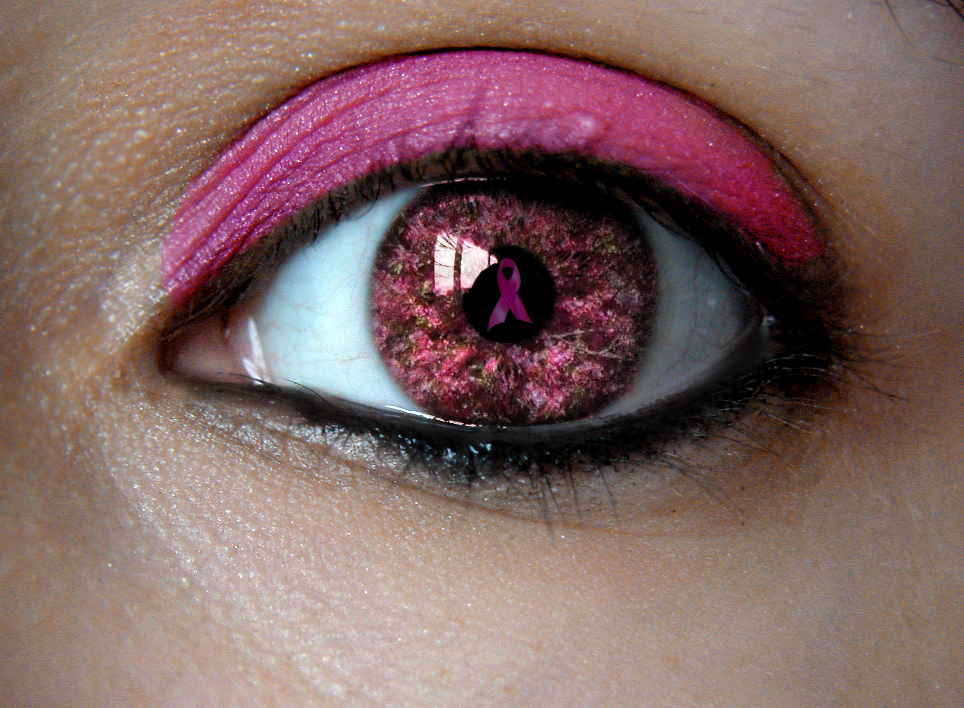>> It’s October – Breast Cancer Awareness Month – and it’s the time of year when the whole world seems to turns pink. Yogurt lids are pink. NFL gear is covered in pink ribbons. T-shirts, bumper stickers, and bracelets turn pink.
It’s October – Breast Cancer Awareness Month – and it’s the time of year when the whole world seems to turns pink. Yogurt lids are pink. NFL gear is covered in pink ribbons. T-shirts, bumper stickers, and bracelets turn pink.
Breast cancer is a serious topic. It is the most common cancer among American women, excluding skin cancers. About 1 in 8 women in the United States will develop breast cancer in their lifetime. The American Cancer Society estimates that 231,840 women will be diagnosed with breast cancer in 2015 alone.
I always felt good about supporting activities surrounding breast cancer awareness. I ran Race for the Cure. I attended fundraising events. I even bought some pink ribbon branded merchandise. But a friend who is a breast cancer survivor opened my eyes to a different perspective, and it’s got me thinking: maybe everything isn’t so rosy in the pink world of October.
How much of Breast Cancer Awareness Month is about cancer and how much is about marketing? According to >>Breast Cancer Action, in 2010, Dansko shoe company sold pink ribbon clogs. But no portion of the sales went toward the breast cancer research or support. The company did donate $25,000 to Susan G. Komen for the Cure, but that amount had already been set.
It is unclear if the >>NFL’s “Pink October” campaign actually provides any money at all for breast cancer research. Some reports indicate that about 8 percent of the money raised during the campaign goes to cancer research, but others have said that none go toward finding a cure.
These kinds of campaigns are focused on “awareness,” not action. But, it seems like most of us are aware of the existence of breast cancer and the tragedy that it can bring. And far too many survivors, victims and their families are aware of the toll of the disease and its treatment. So, shouldn’t we be focused on action? Shouldn’t we be telling people specific ways they can help themselves – by reducing risk and recognizing warning signs – and others?
Speaking of risks, some of the very products that carry pink labels contain or are linked to chemicals that cause cancer, a practice called “pinkwashing.” For many years, the hormones used in the production of yogurt carrying pink lids were associated with increased risk of breast cancer. Fortunately, Yoplait and other companies made changes to get that hormone out of their products. A number of cosmetic companies that raise money for breast cancer research market products containing known carcinogens at the very same time.
And the part of this that may be hardest to take for many survivors and for women in general is the focus on the breast. Why are slogans like “save the tatas” so prevalent? Sure, they are sexy and catchy, but they also reduce women to body parts. We should be focusing on saving the person, not the breast. And, news flash, many women lose their breasts in treatment.
So, the long and short of it is that we should continue to raise as much money as possible for research into breast cancer and all forms of cancer. But, we should be mindful of where that money goes and what it is used for. Instead of just spreading “awareness,” we should help women (and men) learn about the science behind cancer and ways to reduce their risk.
And we should keep the focus on the survivors, those undergoing treatment and those living everyday with metastatic cancer. If you have a friend going through treatment, offer your support – meals, rides, whatever you can give. It is about a person – not a body part.
I still love pink, but I love my friends and family members touched by cancer even more.

I do not agree: http://www.si.com/extra-mustard/2015/10/13/steelers-deangelo-williams-breast-cancer-mammogram
I agree but what do you suggest? Which programs are the best in dedicating their funds to breast cancer research? I’m a recent triple negative diagnosee. I want to make sure any contribution or pink purchase I make helps with finding better ways to fight this horrible disease, not with talk but with research-based action. Please advise.
I don’t agree. Look at
http://pix11.com/2015/10/23/backstage-on-broadway-krysta-rodriguez-shares-breast-cancer-journey-talks-spring-awakening/